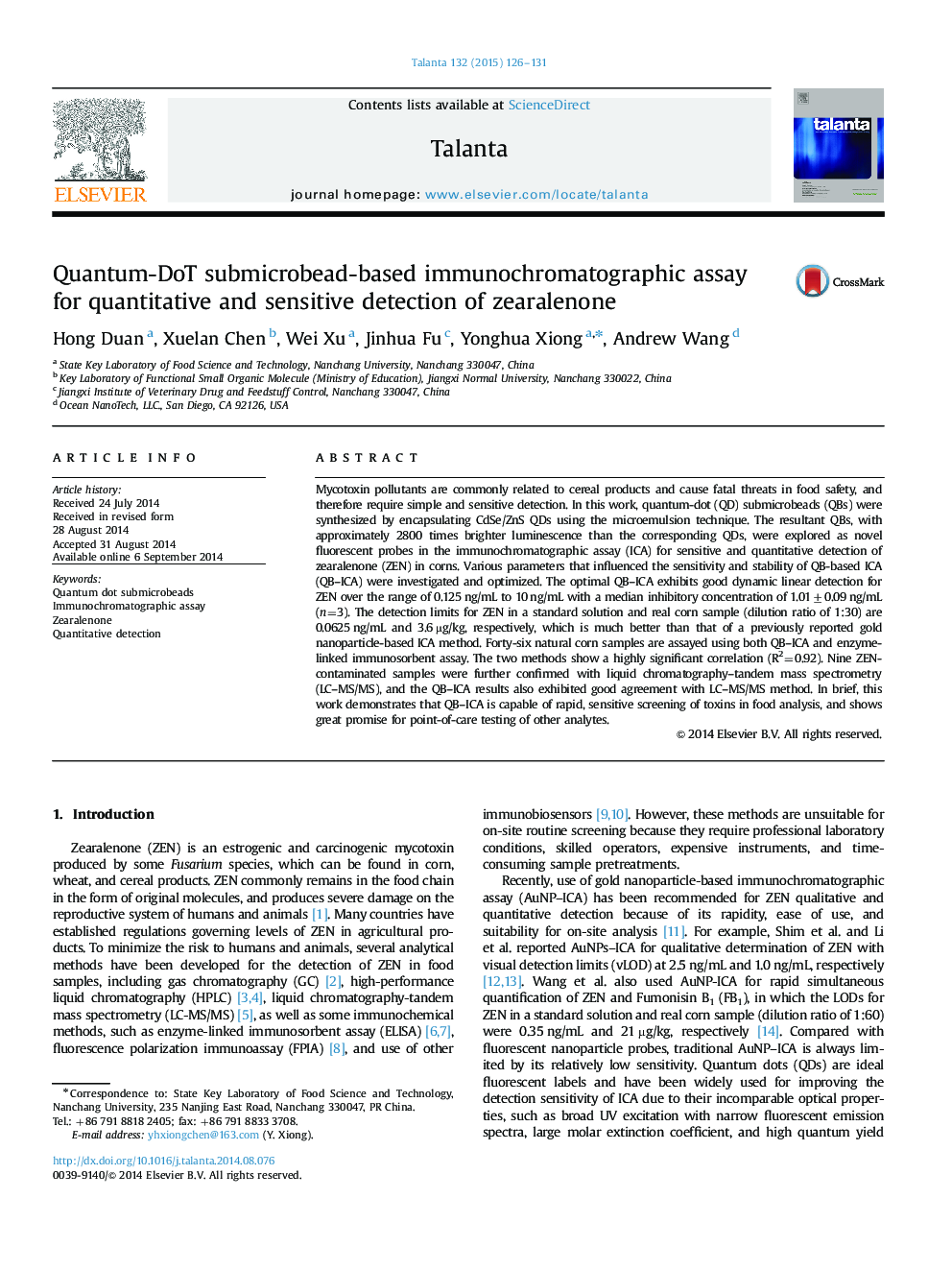| کد مقاله | کد نشریه | سال انتشار | مقاله انگلیسی | نسخه تمام متن |
|---|---|---|---|---|
| 1241997 | 1495803 | 2015 | 6 صفحه PDF | دانلود رایگان |

• Highly luminescent quantum dot beads are firstly explored as novel probes in the competitive strip assay.
• A fluorescent reader-based strip test was developed for quantitative and sensitive detection of zearalenone.
• The detection limit of the resultant QB-ICA exhibits 5.6 times higher than that of a previously reported AuNPs-ICA method.
Mycotoxin pollutants are commonly related to cereal products and cause fatal threats in food safety, and therefore require simple and sensitive detection. In this work, quantum-dot (QD) submicrobeads (QBs) were synthesized by encapsulating CdSe/ZnS QDs using the microemulsion technique. The resultant QBs, with approximately 2800 times brighter luminescence than the corresponding QDs, were explored as novel fluorescent probes in the immunochromatographic assay (ICA) for sensitive and quantitative detection of zearalenone (ZEN) in corns. Various parameters that influenced the sensitivity and stability of QB-based ICA (QB–ICA) were investigated and optimized. The optimal QB–ICA exhibits good dynamic linear detection for ZEN over the range of 0.125 ng/mL to 10 ng/mL with a median inhibitory concentration of 1.01±0.09 ng/mL (n=3). The detection limits for ZEN in a standard solution and real corn sample (dilution ratio of 1:30) are 0.0625 ng/mL and 3.6 µg/kg, respectively, which is much better than that of a previously reported gold nanoparticle-based ICA method. Forty-six natural corn samples are assayed using both QB–ICA and enzyme-linked immunosorbent assay. The two methods show a highly significant correlation (R2=0.92). Nine ZEN-contaminated samples were further confirmed with liquid chromatography–tandem mass spectrometry (LC–MS/MS), and the QB–ICA results also exhibited good agreement with LC–MS/MS method. In brief, this work demonstrates that QB–ICA is capable of rapid, sensitive screening of toxins in food analysis, and shows great promise for point-of-care testing of other analytes.
Figure optionsDownload as PowerPoint slide
Journal: Talanta - Volume 132, 15 January 2015, Pages 126–131